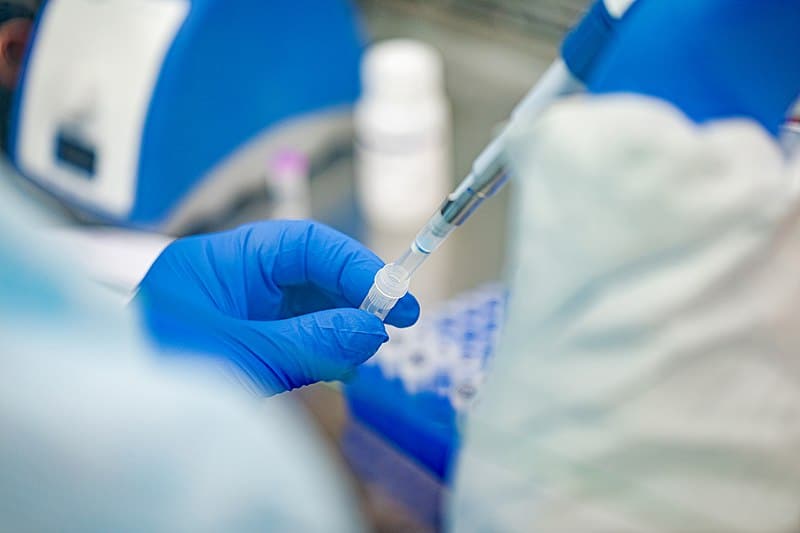DNA testing uses genetic analysis to determine an individual’s identity or genetic characteristics. DNA and paternity testing are both types of gene testing, but they are used for different purposes. To elaborate on them, Spark DNA testing examines an individual’s DNA banding patterns to identify any gene mutations. It can spot changes to your genes, chromosomes, or proteins. These mutations can reveal whether you have a genetic disorder or not. DNA testing can also determine your likelihood of contracting a particular disease or passing on a genetic problem. It can be helpful to suspect a crime, or it can be useful for genetic testing for medical conditions in which a person’s DNA is analyzed to determine their risk of certain inherited diseases.
Among the other genetic testing are those that look at:
Genes
To find changes (mutations) in your genes may raise your chance of developing a genetic condition; gene testing examines your DNA. One gene, a few genes, or entire DNA can be analyzed using gene testing. Genomic testing entails examining all your DNA.
Chromosomes
DNA chromosomes, or long strings of DNA, are the subject of chromosomal assays. They search for gene order alterations that could be the root of a genetic disorder. An added copy of a chromosome is one of the modifications that are being monitored.
Proteins
Protein tests seek the byproducts of chemical events inside our cells by analyzing enzyme activity in cells. A genetic issue may result from DNA alterations causing problems with your proteins.
But on the other hand, talking about Paternity testing is a specific type of DNA testing used to determine a child’s biological father. To identify the banding patterns and similarities between the many DNA samples studied, and to produce verified findings, Paternity testing, which is a form of DNA testing, uses procedures including electrophoresis, RFLP, and PCR. Beginning with the sample’s DNA extraction, analysis is conducted (usually saliva). It must amplify DNA since the amount of DNA found in these samples is so little before it may make millions of copies to analyze it. Scientists use the polymerase chain reaction (PCR) to do this; millions of copies of the STR sections may be made in a matter of hours. The next step involves binding the DNA copies to a fluorophore to make them visible. The length of STR segments and the copies produced by PCR vary. As a result, the sample produced by amplification is sent over a small mesh network where smaller documents move more quickly than bigger ones. The speed at which the DNA copies move is called electrophoresis, which helps to estimate their length.
Paternity testing is done by analyzing the DNA of the child, the mother, and the potential father and comparing the samples to see if there is a match. Paternity testing is done before or after a child’s birth, and the results are typically used for legal or personal purposes, such as child support or establishing a child’s inheritance.
There are two main types of paternity testing:
Non-invasive prenatal paternity testing (NIPP)
This type of testing is performed during pregnancy, and it involves analyzing the DNA of the unborn child, the mother, and the alleged father. It can do it by taking a blood sample from the mother and analyzing the DNA of the unborn child, which is present in the mother’s bloodstream. This type of test is highly accurate and can be performed as early as 8-10 weeks into the pregnancy.
Postnatal paternity testing
This testing is performed after the child is born. It is done by collecting DNA samples from the child, the mother, and the alleged father and comparing them to determine if there is a match. It can order the samples through a simple cheek swab and obtain the results within a week or two.
There are several situations where a paternity test may be helpful. They may occasionally have to do so by a court in matters of child custody and maintenance. They can also help with getting the proper paperwork for a birth record.
More applications for paternity testing include:
1. Setting up benefits for veterans, Social Security, and inheritance
2. Information about health
3. Enhancing the relationship between a kid and a parent who is not pregnant
To conclude, DNA (Deoxyribonucleic acid) is the genetic material you inherit from your mother and father, but Paternity refers only to fatherhood. It makes it clear that a DNA test examines an individual’s DNA banding patterns to identify any gene mutations. Still, a Paternity test uses DNA, usually taken from a cheek swab, to determine whether a man is the child’s biological father.














Leave a Reply